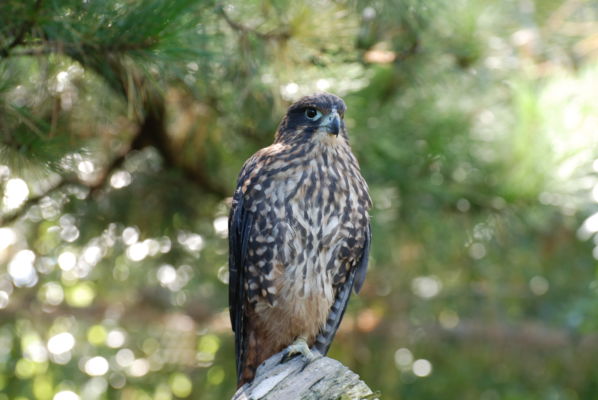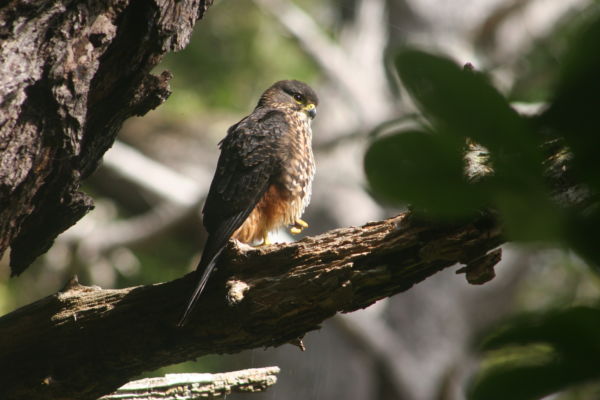Before humans arrived, 78% of Aotearoa was covered in native podocarp forest. In the 700 years since we got here, 60% of that forest has gone. The good news is that at least some of our native species are managing to make do in the blocks of exotic forestry plantations that now cover approximately 7% of New Zealand’s landmass and comprise roughly 20% of the forest area in New Zealand. One of those species is the kārearea – the New Zealand falcon.

Researchers from Massey University looked, for the first time, at the winter use of plantation habitat by the falcon. The results of their study were recently published in the New Zealand Journal of Ecology.

“Deforestation and conversion to intensive agriculture historically caused a large reduction in abundance of the New Zealand falcon, resulting in its current classification as At Risk. Many New Zealand falcons occur in managed plantation forests, but little is known about their winter use of the mosaic of different aged stands present in these forests. We radio tracked adult falcons (n = 36) during three winters (2012–2014) in Kaingaroa Forest, an intensively managed pine plantation located in the Central Plateau of the North Island of New Zealand.”
Historically, falcons found in the North Island inhabited podocarp and beech forests and nested in the epiphytes growing in large trees – a very different environment from the average forestry plantation. One reason that this alien habitat suits them, may be the forestry operation methods used.
“Clearcutting causes a sudden exposure of deep forest insect fauna to open environments and results in the attraction of insectivorous and generalist bird species.”
And falcons are efficient predators of other, smaller birds. So what did the field work involve?
“In 2012, we continuously tracked each falcon for 8 h daily between dawn and dusk. In 2013 and 2014, we continuously tracked for 6 h daily and alternated shifts weekly, from dawn to early afternoon one week and early afternoon to dusk the next… We used tracking data to establish the extent and habitat composition of winter home ranges, and transect surveys to assess the availability of potential prey (passerine birds).”
Falcons had clear preferences for the hunting habitat they used within the exotic forest.
“Open fields created by clearcutting were the primary hunting ground of falcons. Falcons occupied young pine stands (30.4%) and the ecotone between young and mature pine stands (31.2%) most frequently despite its limited availability (20.1% and 3.7%, respectively).”
They also made good use of the forest to shelter from the worst of the winter weather.
“We observed that falcons used the mature portion of the forest edge area as a vantage point for hunting or for territorial defence and as a shelter from heavy rain, and interiors of mature tree stands as a shelter from strong winds.”
So what can be done to help our rare falcons survive in the exotic plantations that now makes up 20% of New Zealand’s forests?
“Total prey abundance was similar across all habitats and sizes of open fields, but the species composition of potential prey differed significantly between habitats. Thus, the dynamic changes to forest structure created by clearcutting and its effects on prey accessibility are the most important factors influencing falcon space use. Our results suggest that providing habitat containing ecotones of young trees adjacent to mature trees throughout plantation forests can assist in the conservation of his threatened endemic raptor.”
This research is published in the New Zealand Journal of Ecology and is freely available online.

